What is 00 flour
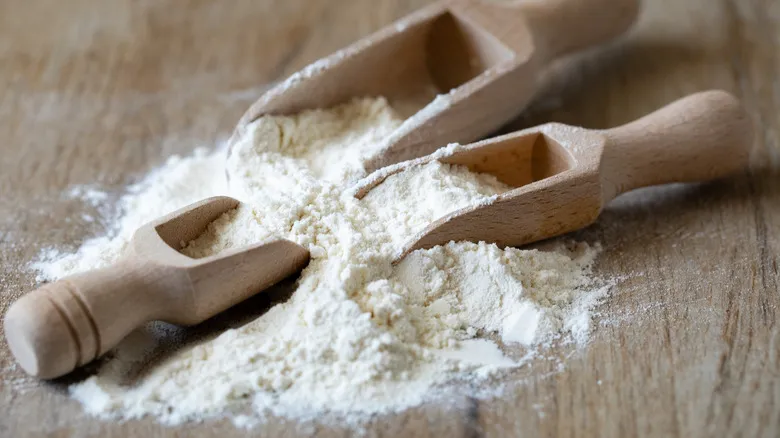
If you've come across 00 flour (also known as doppio 00) in the supermarket, you likely noticed its connection to pizza. In fact, some brands, like King Arthur, even label it as 00 Pizza Flour. This is because 00 flour is frequently used for making pizza dough, pasta, and occasionally bread. In Italy, 00 flour is readily available in grocery stores, as it serves as a fundamental ingredient in many Italian dishes. But what does the "00" designation signify?
In Europe, the "00" refers to the fineness of the flour's grind, with "2" indicating the coarsest grind setting. In contrast, American flour is typically categorized by its protein content, with cake flour and pastry flour on the lower end and bread flour on the higher end. While cake flour and pastry flour are ground as finely as 00 flour, their differing protein levels complicate the classification of 00 flour.
The protein content of 00 flour can range from 7% to 14%, depending on the brand, but it is most commonly found between 11% and 13%. Generally, this means it has a higher protein content than standard all-purpose flour but lower than bread flour. This unique combination of fine texture and elevated protein content makes 00 flour particularly well-suited for creating the tender yet chewy characteristics of pasta and pizza dough.
How is it made

00 flour is primarily produced from soft durum wheat, a type of spring wheat that is best known for yielding semolina flour, which is commonly used in various pasta doughs. The wheat kernel, which is milled into flour, consists of the germ, bran, and endosperm. Traditionally, 00 flour is made exclusively from the delicate endosperm, with the bran and germ removed early in the milling process. In contrast, whole wheat flour incorporates the entire wheat kernel, including the nutrient-rich germ and bran. The endosperm is where the majority of the starch and protein are found, resulting in a white, starchy flour.
This flour can be coarsely ground, similar to semolina, or finely milled into 00 flour. Because soft durum wheat is significantly softer than other types of wheat, it requires less grinding to achieve a silky texture, which helps preserve the integrity of the gluten strands during the milling process. This is advantageous, as the flour must pass through the mill grinder several times to achieve its fine consistency. In comparison, all-purpose flour or bread flour is made from hard wheats or a blend of hard and soft wheats, meaning that to reach the same fineness as 00 flour, the gluten would be extensively damaged during the grinding process.
00 flour vs other flour
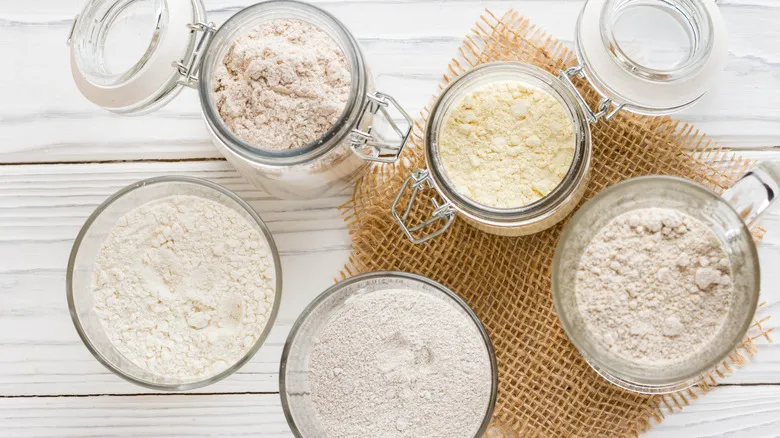
As previously mentioned, most flours differ from 00 flour due to its fine texture and protein content. Although cake and pastry flours are ground as finely as 00 flour, they have significantly lower protein levels (ranging from 7% to 8%). Additionally, some brands of cake flour are bleached, which means they undergo a chemical process to achieve a softer, whiter product. Generally, 00 flour is unbleached. Self-rising flour, commonly used for making tender items like biscuits and pancakes, has a lower protein content and includes additives like salt and baking powder, whereas 00 flour has no such additives.
On the other hand, bread flour has a similar protein content (approximately 12% to 14%), but it is not ground as finely as 00 flour. All-purpose flour comes closest in terms of both texture and protein, but since 00 flour is made from durum wheat and all-purpose flour is a mix of hard red wheat and soft wheat, their behaviors in baking differ.
At the other end of the spectrum is whole wheat flour, which stands in stark contrast to 00 flour. It includes the bran and germ, contributing flavors, colors, and textures that are entirely different from what high-quality 00 flour aims to achieve.
The gluten properties of 00 flour

When it comes to baked goods, gluten plays a crucial role. It distinguishes all-purpose flour from bread flour, and cake flour from the similarly named pastry flour. As I mentioned, 00 flour generally has a protein content of 11% to 13%, positioning it between all-purpose and bread flour in terms of protein levels. Gluten strands form when glutenin and gliadin—two types of proteins—come into contact with water. This gluten serves as the backbone of your dough, creating a web-like structure that results in a strong, airy texture and a unique chewiness. The higher protein content in 00 flour provides a delightful bite in pizza, offering strength without becoming overly tough due to excess gluten.
What makes 00 flour unique is that it is derived from durum wheat, which behaves differently than flour made from red wheat. While both can have similar gluten levels, the gluten in durum wheat does not produce as pronounced a chewy texture. Additionally, the fine milling of 00 flour contributes to a softer texture compared to bread flour. Finely ground flour absorbs moisture more effectively, requiring less liquid and resulting in less gluten formation. This is ideal for pizza and pasta, delivering the perfect amount of satisfying bite without crossing into toughness.
How to make pizza with 00 flour

While 00 flour has several distinctive qualities that make it ideal for pizza-making, you don't need to handle it much differently than other flours. You'll still mix, knead, and ferment the dough just like you would with any standard pizza dough. It's also important to avoid common mistakes in pizza preparation, such as using a rolling pin to shape the pizza and stretching the dough too thin.
There are really only two key factors to keep in mind when baking pizza with 00 flour. First, 00 flour performs best at very high oven temperatures (above 500 degrees Fahrenheit). It's well established that increasing your oven's heat can help prevent a soggy pizza crust, and this high temperature is particularly beneficial for 00 flour. The reason? Some bakers attribute this to the low sugar content in 00 flour, which makes it harder for the flour to brown and caramelize at lower temperatures.
The second consideration is the amount of water you incorporate into your dough. When substituting 00 flour in a recipe that calls for a different type of flour, you may need to reduce the amount of liquid, as 00 flour requires less moisture to create a proper dough.
How to make pasta with 00 flour
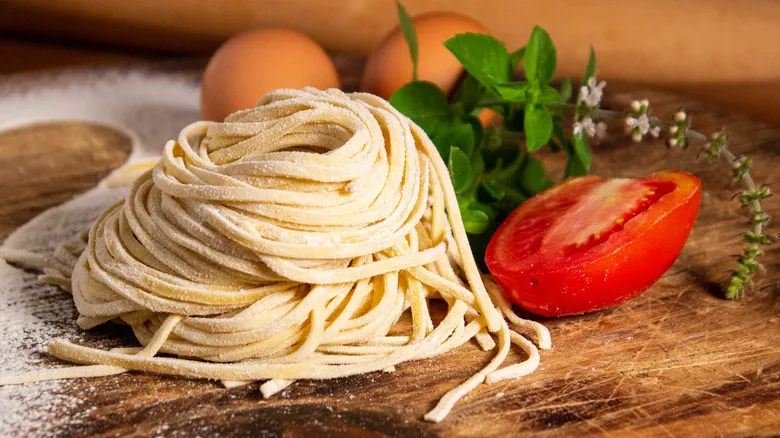
00 flour is ideal for creating the perfect al dente pasta, producing a dough that offers a satisfying bite without the undesirable chewiness. However, there are some guidelines to keep in mind when using this flour for pasta preparation. For delicate noodle types, such as ravioli or tagliatelle, you can use 100% 00 flour without compromising their structural integrity, resulting in pasta with a luxuriously smooth texture. On the other hand, if you're aiming to make pasta that pairs well with cream sauces, like rigatoni or penne, or any sturdier shape, you'll need to incorporate an additional ingredient to help the sauce adhere better.
This is where semolina flour comes in. Made from durum wheat, semolina has a coarser texture, a yellow color, and a higher gluten content. A blend of equal parts 00 flour and semolina flour creates an excellent pasta dough for shapes like macaroni or ziti. The coarsely ground semolina contributes a robust texture that helps sauces cling to the pasta. Additionally, you can sprinkle some semolina flour on your work surface while rolling out your pasta sheets to achieve a similar effect.
Other uses for 00 flour

While 00 flour is primarily linked to pasta and pizza, it is actually a versatile ingredient that can enhance a variety of other dishes. Consider focaccia, an Italian flatbread known for its appealing golden crust and airy interior. The properties that make 00 flour ideal for pizza dough also apply to this bread: its high protein content and low gluten levels create a deliciously tender yet satisfying bread. Likewise, 00 flour is suitable for other breads like ciabatta and various flatbreads. If you choose to use 00 flour in a specific bread recipe, opt for one with a higher protein content (12% or more) and be prepared to increase the amount of liquid in the recipe.
Another unexpected application for 00 flour is in cake baking. Although standard cake flour typically has a lower protein content than 00 flour, it is not as finely milled. This means that 00 flour can actually be a softer option. Therefore, it may be beneficial to experiment with lower protein 00 flours—10% or less—when substituting for cake flour in recipes that rely on other ingredients for structure. A prime example is angel food cake, which gains significant support from egg foams. However, be cautious, as this substitution might make your cakes so delicate that they could crumble easily, so it's best to avoid using 00 flour for layer cakes.
Where to find 00 flour
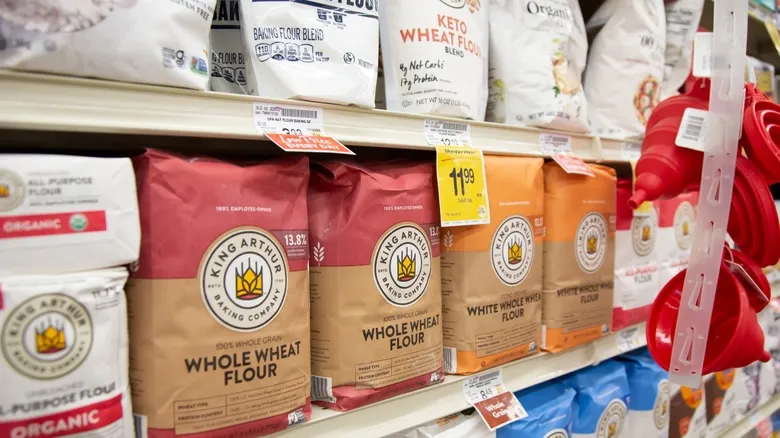
Finding a bag of 00 flour in a typical supermarket used to be quite a challenge. Fortunately, thanks to trendsetters and pizza enthusiasts, this product has gained popularity and is now readily available on grocery store shelves. Some Walmarts and local grocery stores stock Italian brands like Anna Napoletana and Caputo. Additionally, several American brands, such as King Arthur Baking Company and Bob's Red Mill, offer their own versions of 00 flour that you can find in stores. Many of these brands are specifically designed for making pizza or pasta, so keep that in mind when using them for bread or cake baking.
If you're unable to find it locally, you can always order a quality bag of 00 flour online. Artisan brands can be purchased from specialty websites like Bona Furtuna or the aptly named Italian Food Online. You might notice that 00 flour tends to be more expensive than standard all-purpose flour. While some of this cost can be attributed to import fees for authentic Italian flour, the primary reason is the production process. The meticulous grinding method results in a loss of about 30% of the grain during milling, making 00 flour more expensive to produce.
How to properly store 00 flour
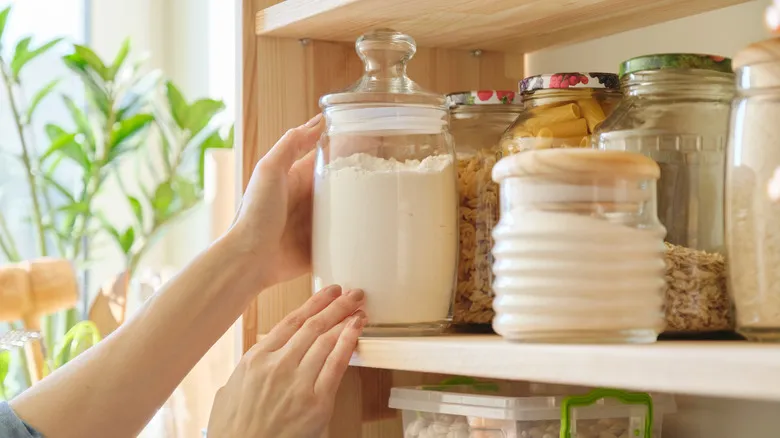
Storing flour isn't as simple as it might seem. While paper bags are suitable for transporting and purchasing flour, they are more susceptible to exposure, which can lead to quicker spoilage. How does this happen? Microorganisms such as yeast and mold thrive on oxygen and flourish in open air. To prevent harmful growth in this oxygen-rich environment, it's best to transfer your flour into an airtight container, such as a plastic zip-top bag or a resealable glass or plastic canister.
Next, think about the ideal location for storing this container of flour. Most types of flour can be kept in the pantry for a while, as it provides a cool, dry, and dark environment. However, for specialty flours that you want to keep as fresh as possible, the refrigerator or freezer is the best option. Although 00 flour lacks the volatile nutrients and fats found in whole wheat or nut flours, it can still spoil if not stored correctly. Additionally, a brief stay in the freezer (about four days) can eliminate any potential harmful bacteria lurking in your flour. By adhering to these guidelines, your flour should stay fresh for up to a year.
Alternatives to 00 flour

If you can't find your bag of 00 flour, there are several alternatives you can use, depending on the type of dough you're preparing. For pizza, you can substitute either all-purpose flour or bread flour. If you prefer a crust with a more delicate texture, go for all-purpose flour, which has a fine grind similar to 00 flour but with a slightly lower protein content. On the other hand, if you want a dough with a chewy texture, choose bread flour, which has a higher protein level. Your choice will ultimately depend on your desired pizza crust texture.
When making pasta, you'll face a similar choice. All-purpose flour will yield a softer pasta dough, but it may not have the satisfying bite of dough made with semolina or bread flour. You could also mix the two to achieve a balance similar to a combination of 00 flour and semolina.
However, the substitution isn't always complicated. Recipes for bread like focaccia or ciabatta that call for 00 flour should work well with bread flour instead. Lastly, if you were planning to bake a cake using tender 00 flour, consider switching to cake flour for the softest results, or all-purpose flour for a slightly less soft outcome.
Recommended

Is Dominique Ansel's Pastry Flour Worth The Price?
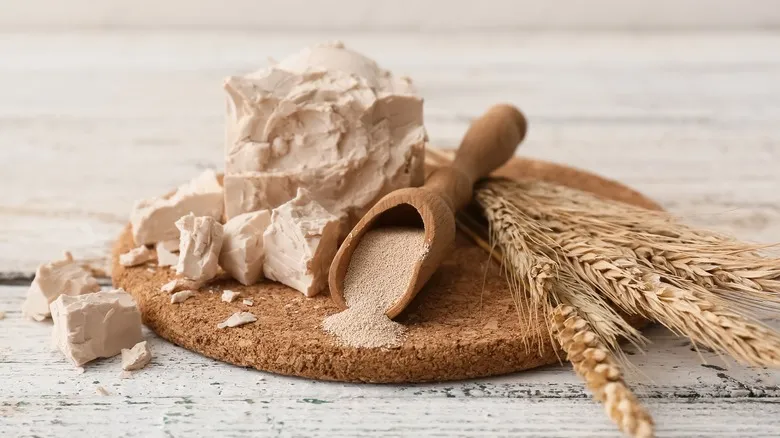
A Beginner's Guide To Baking With Yeast
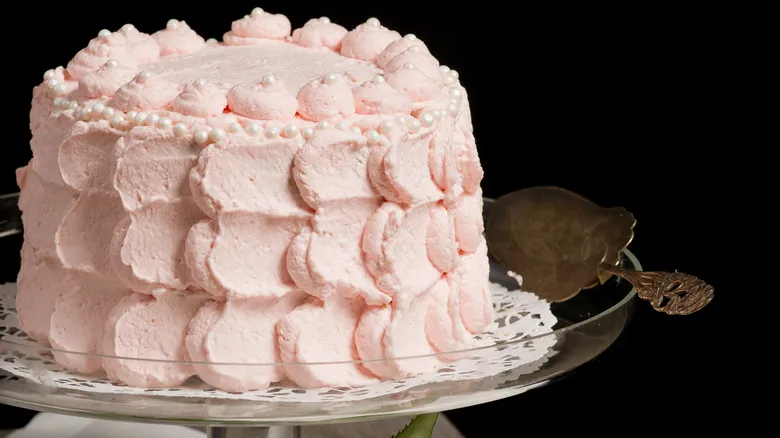
The Prettiest Way To Decorate Your Cake With Just A Spoon And A Bag
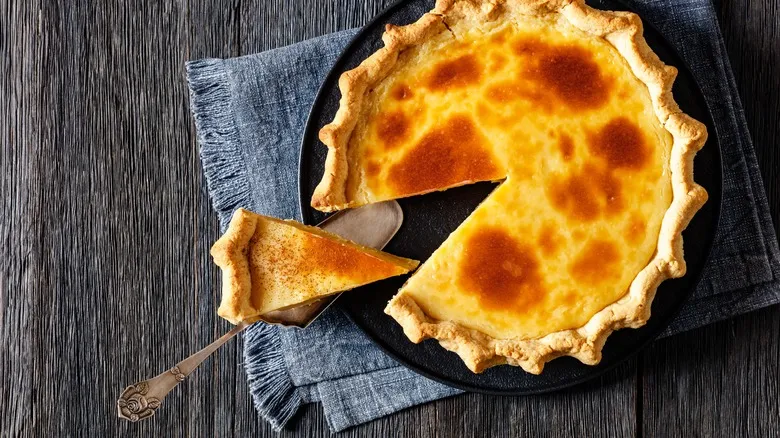
Why You Should Never Store Custard Desserts In The Freezer
Next up

